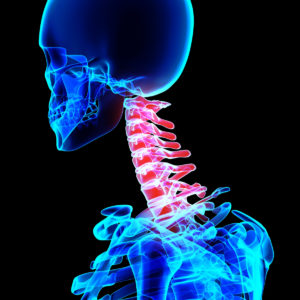Guest Post by Adam McCluskey
I think of posture analysis as the foundation of my client evaluation.
This shows me what position they spend most of their day in.
I can tell which motions will be limited, and where they will be weak just from a short posture analysis.
Since posture has a direct correlation to joint mobility, it is best to analyze it very early in the evaluation  process.
process.
Without proper joint mobility, our clients are forced to compensate to gain motion from other places.
This is the source of many exercise injuries.
Let’s say a new client walks in who has a desk job and sits at a computer for 6+ hours a day. They also tell you they don’t do much exercise other than walking the dog.
Just from this little bit of information, we already know a few things that will help us in our posture and movement analysis.
First, consistently sitting for long periods of time often leads to tight hamstrings and hip flexors.
Also, as you have probably noticed while working at your computer, your postural awareness quickly goes out the window.
Shoulders start slouching and your head starts creeping forward.
So how does this impact my clients’ workouts?
Tight hamstrings and hip flexors negatively impact your clients’ ability to squat and deadlift with good form.
When the needed motion is not available, compensation starts to occur.
Poor upper body posture, like rounded shoulders and forward head position, predisposes your client to shoulder and neck pain if ignored.
This is essential to address before starting to incorporate overhead pressing in their workouts.
Where to start?
You can go through a good posture analysis in about 2 to 3 minutes.
My recommendation is to give your potential client a quick explanation of why you are looking at their posture.
Talk about how it will help you personalize their workouts for their specific needs.
As you go through the analysis, take note of the big things. Don’t worry about splitting hairs.
Observe your clients from the front, back, and both sides looking for the things in the reference chart below.
This info will streamline your movement analysis and make your whole evaluation more efficient.
What to look for:
Use this to determine possible muscle and joint tightness as well as potential weakness.
Forward Head Position:
* Tight/Overactive Upper Traps
* Weak Lower Traps and Neck Flexors
* Increased Risk of Neck, Shoulder, Arm Pain
Rounded Shoulders:
* Tight/Overactive Pecs
* Weak Middle and Low Traps
* Increased Risk of Shoulder Impingement
Thumbs Internally Rotated:
* Tight/Overactive Pecs, Lats, and Subscapularis
* Weak Infraspinatus, Teres Minor, and Rear Deltoid
* Increased Risk of Biceps Tendonitis
Hips Tilted Forward Excessively:
* Tight Hip Flexors and Paraspinals
* Weak Rectus Abdominus
* Increased Risk of Lumbar Spine Pain
Knees Hyperextended:
* Hip Weakness
* Decreased Frontal Plane Stability
Feet Turned Out:
* Tight Hip External Rotators
* Limited Hip Mobility
* Increased Risk of Hip and Back Pain While Squatting
Now that you have some vital information about your client, we’re going to dive into how to use all of this information to build a huge client base!
——————–
Part 2
Now that we’ve covered the nuts and bolts of posture analysis, let’s talk about how to turn this into increased cash flow for your business.
As mentioned in this post, our potential clients want a personalized experience that exceeds their expectations.
Throughout the initial evaluation, you should be gaining information about your clients’ goals and pain points.
Integrating their goals into the findings of your posture and movement analysis creates a powerful experience.
Many of our clients will come to us with at least one of these postural deviations.
Use the reference chart to guide your thinking as you move into the movement analysis portion.
Note: You can find the movement analysis flow chart HERE.
Now that you have an idea of what to look for from their posture, you can more efficiently spot their actual movement restrictions.
Again, this is your foundation. It gives you a starting point and a good idea where they will need development.
How Posture Leads to More Sales
1) Build Trust
As you meet with your potential clients and begin to understand their fitness goals, this is when you start to build their trust.
You are the expert; but you also need to show that you are fully invested in helping them reach their goals.
Trust is built as you create a personalized experience while using your specialized knowledge base.
The posture analysis is a great way to show your expertise in a way that gives value and information to your client. This will always be more effective than flaunting your knowledge in a way that only makes you look good.
Without building trust, the rest of the process begins to fall apart.
2) Leverage Your Knowledge
As you go through the posture and movement analysis, your client is realizing you are equipped to help them accomplish things they could never do alone.
They will notice your knowledge, attention to detail, and be confident that you have what it takes to help them make unbelievable changes.
This is an important tool to have as your initial evaluation comes to a close. Having the knowledge and skill to help your client is one thing, but they must know how this will help them accomplish their own personal goals.
This is where leverage comes into play.
There are tons of trainers they could be working with.
What are you going to do to help them decide that you are their best choice?
I have found that a combination of open-ended questions, posture analysis, and movement analysis gave me significant leverage to help them decide.
I presented my knowledge in a value-providing way, and used that to set myself apart.
The best part of this is that it’s extremely effective and very reproducible in your business!
3) Make The Sale
Most trainers hate this part of the job, but it doesn’t have to feel like selling used cars.
When you build trust and show value, the selling is effortless.
It no longer feels “salesy” because you have given them so much value. They feel connected to you and know you are the expert they need.
I have found that when I do a good posture and movement analysis, and then tie it all back into their goals, they end up doing most of the selling themselves.
If you have connected with your potential client, built trust, and leveraged your knowledge, making the sale becomes a natural part of the process.
At this point you should be able to tell them exactly what areas they need to work on, how you will structure their training program, and how this will help them achieve their goals.
Your client will now gain an overwhelming amount of confidence in your abilities to take them where they need to go.
Hope this helps you in your business!
Adam McCluskey is a Doctor of Physical Therapy Candidate, Corrective Exercise Specialist, and Founder of The Personal Trainer Initiative.


